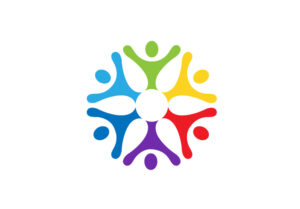I AM CONNECTED

Unlock the power of connection for a happier, healthier life! Social bonds provide vital support, reduce stress, boost self-esteem, and enhance overall well-being. Join the community of well-being and experience the benefits of meaningful connections. For those feeling lonely and in search of a deeper purpose in life, joining a spiritual community can provide not only companionship but also a sense of belonging and a pathway to spiritual growth. Discover the support, guidance, and connection you’ve been longing for in your life.
Join our selected communities and feel more connected to each other and the World.
Inner Child Connection
10 Ways to Heal Your Inner Child for Emotional Well-being
Healing your inner child is crucial for emotional well-being and personal growth. Childhood experiences, whether positive or negative, shape our adult selves. Engaging in inner child exercises can help you address past wounds and foster self-nurturance. Here are ten effective techniques to heal your inner child and promote emotional healing.
1. Acknowledge Your Inner Child: Recognize and validate the existence of your inner child, the part of your subconscious that retains childhood memories and emotions. Offer reassurance and love to your inner child, letting them know they are seen and cared for.
2. Embrace Self-Hugging Daily: Physical touch can be a powerful tool for soothing your inner child. Practice self-hugging daily, holding yourself tight for a few minutes to provide comfort and reassurance. Consider incorporating the butterfly hug technique, tapping gently on your chest while taking deep breaths.
3. Recall Happy Childhood Memories: Recall and immerse yourself in joyful memories from your childhood. Visualize moments of happiness and security, such as baking cookies with loved ones or exploring nature. Reconnecting with these positive experiences can bring comfort and emotional stability.
4. Mirror Work for Self-Acceptance: Combat negative self-perceptions formed during childhood by practicing mirror work. Stand before a mirror daily and affirm positive statements to yourself, such as “I matter” and “I am worthy of love.” This practice fosters self-acceptance and self-love.
5. Cultivate Self-Compassion: Practice self-compassion to counter self-judgment and criticism. Utilize techniques like self-compassionate journaling and positive self-talk. Research suggests that self-compassion reduces anxiety and depression, promoting overall well-being.
6. Write Letters to Your Inner Child: Engage in therapeutic journaling by writing letters to your inner child. Offer words of support and encouragement, addressing the needs you may have lacked in childhood. Allow your inner child to express themselves through writing or drawing with your non-dominant hand.
7. Identify Emotional Triggers: Identify and understand emotional triggers rooted in childhood experiences. Recognize how past wounds influence present reactions and behaviors. Provide reassurance to your inner child when triggers arise, affirming their safety and worth.
8. Embrace Playfulness: Reconnect with your inner child through play and creativity. Engage in activities you enjoyed as a child, such as coloring, storytelling, or outdoor adventures. Embracing playfulness fosters joy and spontaneity in adulthood.
9. Practice Inner Infant Meditation: Explore inner infant meditation as a tool for healing past traumas. Developed by John Bradshaw, this meditation allows you to reconnect with your infant self and provide nurturing care. Regular meditation promotes stress reduction and emotional resilience.
10. Continue Learning and Growth: Invest in ongoing education and self-discovery to support your inner child journey. Explore resources such as “Homecoming” by John Bradshaw and “Healing the Fragmented Selves of Trauma Survivors” by Janina Fisher, PhD. Supplement your personal growth with professional therapy to facilitate deeper healing and self-reconstruction.
Incorporating these practices into your daily life can facilitate profound healing and transformation, empowering you to nurture and care for your inner child effectively. A big step closer to being present in the here a now.